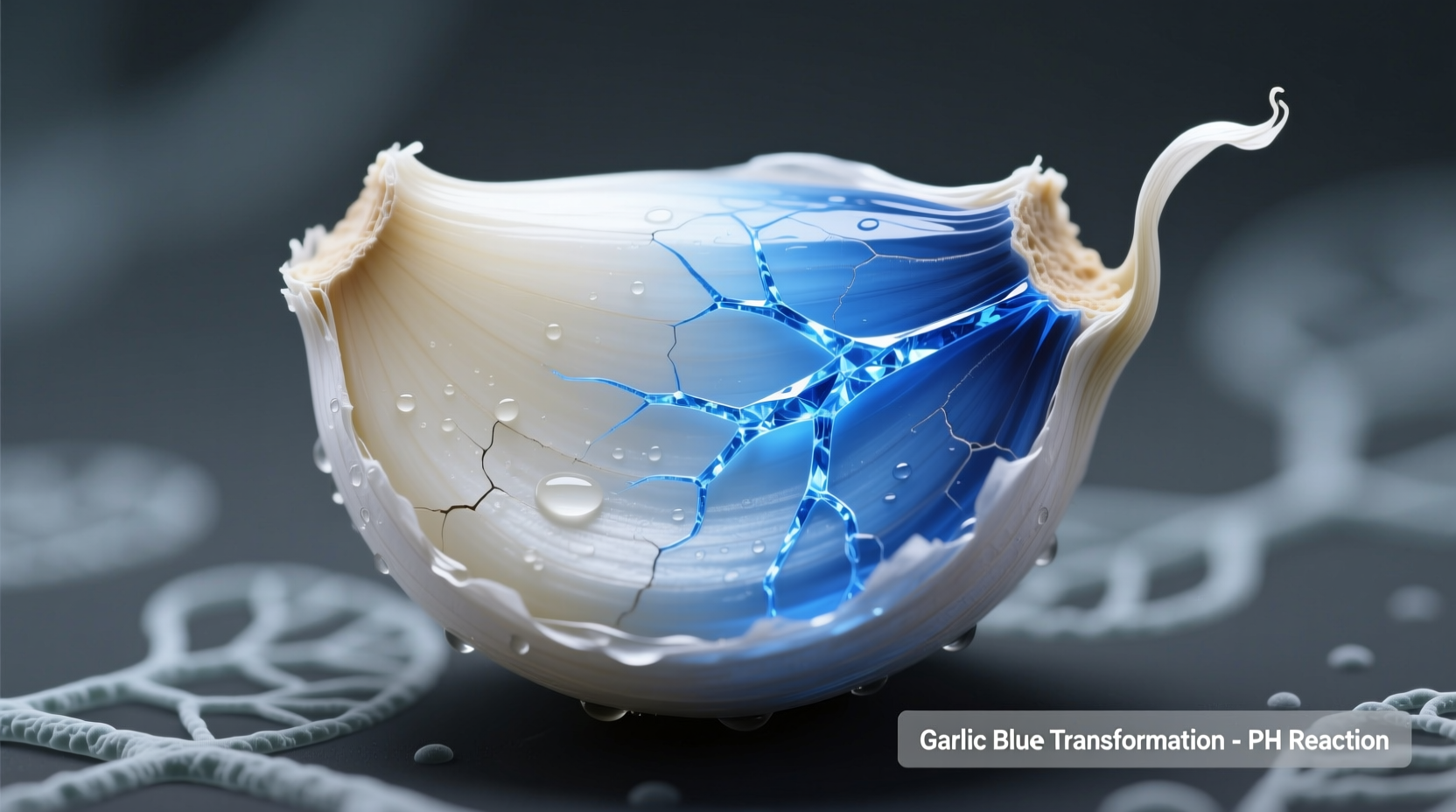Garlic turns blue due to a natural chemical reaction between sulfur compounds and amino acids when exposed to acidic conditions or certain metals. This color change is completely harmless and safe to eat—it's simply a visual transformation with no impact on flavor or safety.
Have you ever sliced garlic only to find it mysteriously turning blue or green? You're not alone. This surprising kitchen phenomenon alarms many home cooks, but understanding the science behind why garlic turns blue can transform your concern into culinary curiosity. Let's explore what causes this color shift, whether blue garlic is safe to eat, and how to manage it in your cooking.
The Science Behind Blue Garlic: What's Really Happening
When garlic turns blue, it's experiencing a natural chemical transformation. Garlic contains sulfur compounds called thiosulfinates that react with amino acids when the garlic cells are damaged through cutting or crushing. This reaction creates anthocyanins—water-soluble pigments that appear blue or green under certain conditions.
The specific trigger for garlic turning blue in vinegar or other acidic environments occurs because low pH levels accelerate this reaction. When garlic comes into contact with acidic ingredients like lemon juice, vinegar, or wine, the anthocyanins become more pronounced, creating that distinctive blue hue. Similarly, contact with copper or iron cookware can catalyze the reaction through metal ion interaction.

Is Blue Garlic Safe? Addressing Your Primary Concern
The most important question on every cook's mind: is blue garlic safe to eat? Absolutely yes. This color change represents a harmless chemical reaction with no impact on food safety. The USDA confirms that color variations in garlic due to natural chemical reactions don't indicate spoilage or safety concerns.
Unlike mold or bacterial growth which produces off-odors, slimy textures, or foul smells, blue garlic maintains its characteristic pungent aroma and firm texture. The flavor remains virtually unchanged—you might detect a slightly milder garlic taste, but nothing unpleasant or dangerous.
Common Situations Where Garlic Turns Blue
Understanding when garlic turns purple when cut helps prevent unnecessary food waste. This phenomenon commonly occurs in these kitchen scenarios:
- Vinegar-based pickling - When making quick-pickled garlic or giardiniera
- Acidic marinades - Particularly with lemon juice or wine vinegar
- Cooking with cast iron or copper - Metal ions accelerate the reaction
- Immature garlic - Younger garlic varieties contain more anthocyanin precursors
- Cold storage - Refrigeration can sometimes trigger the reaction
| Factor | Effect on Garlic Color | Prevention Method |
|---|---|---|
| Acidic ingredients (pH below 6) | Triggers blue/green pigments | Add acid after cooking or use less acidic alternatives |
| Metal contact (copper, iron) | Accelerates color change | Use non-reactive cookware like stainless steel or glass |
| Cold temperatures | Can initiate reaction | Store garlic at room temperature away from refrigeration |
| Garlic variety | Some types more prone to color change | Choose mature garlic bulbs with tight skins |
Practical Prevention: How to Stop Garlic From Turning Blue
If you prefer maintaining garlic's traditional white appearance, these professional kitchen techniques can help prevent how to prevent garlic from turning blue while preserving flavor:
- Control acidity timing - Add acidic ingredients after cooking rather than during
- Choose appropriate cookware - Use stainless steel, enamel-coated, or glass containers instead of copper or cast iron
- Blanch garlic first - Briefly dip cut garlic in boiling water to deactivate enzymes
- Use mature garlic - Older garlic bulbs contain fewer anthocyanin precursors
- Avoid refrigeration - Store garlic in a cool, dark place instead of the refrigerator
Professional chefs often embrace the blue hue as a natural indicator of fresh, high-quality garlic rather than viewing it as a problem. In many traditional Asian and Middle Eastern cuisines, slightly colored garlic is considered desirable and indicates proper preparation techniques.
When Blue Garlic Might Signal a Problem
While scientific reason garlic turns blue is typically harmless, there are rare instances when color change indicates actual spoilage:
- Garlic with blue/green fuzzy mold growth (not uniform color)
- Garlic that's become soft, mushy, or slimy
- Garlic emitting sour or unpleasant odors
- Color accompanied by visible decomposition
True spoilage involves microbial growth, not the natural enzymatic reaction that causes uniform blue coloring. When in doubt, trust your senses—if the garlic smells and feels normal despite the color, it's perfectly safe.
Embracing the Blue: Culinary Opportunities
Instead of preventing garlic turns blue when cooking, many chefs intentionally create this effect for visual appeal. In Korean cuisine, aged garlic turns naturally purple and is prized for its mellow flavor. Some artisanal pickle makers deliberately create blue garlic for its striking appearance in gourmet products.
Next time your garlic takes on an unexpected hue, remember it's not a kitchen disaster but a fascinating demonstration of food chemistry at work. This natural reaction affects appearance only—your dish remains delicious and completely safe to enjoy.











 浙公网安备
33010002000092号
浙公网安备
33010002000092号 浙B2-20120091-4
浙B2-20120091-4